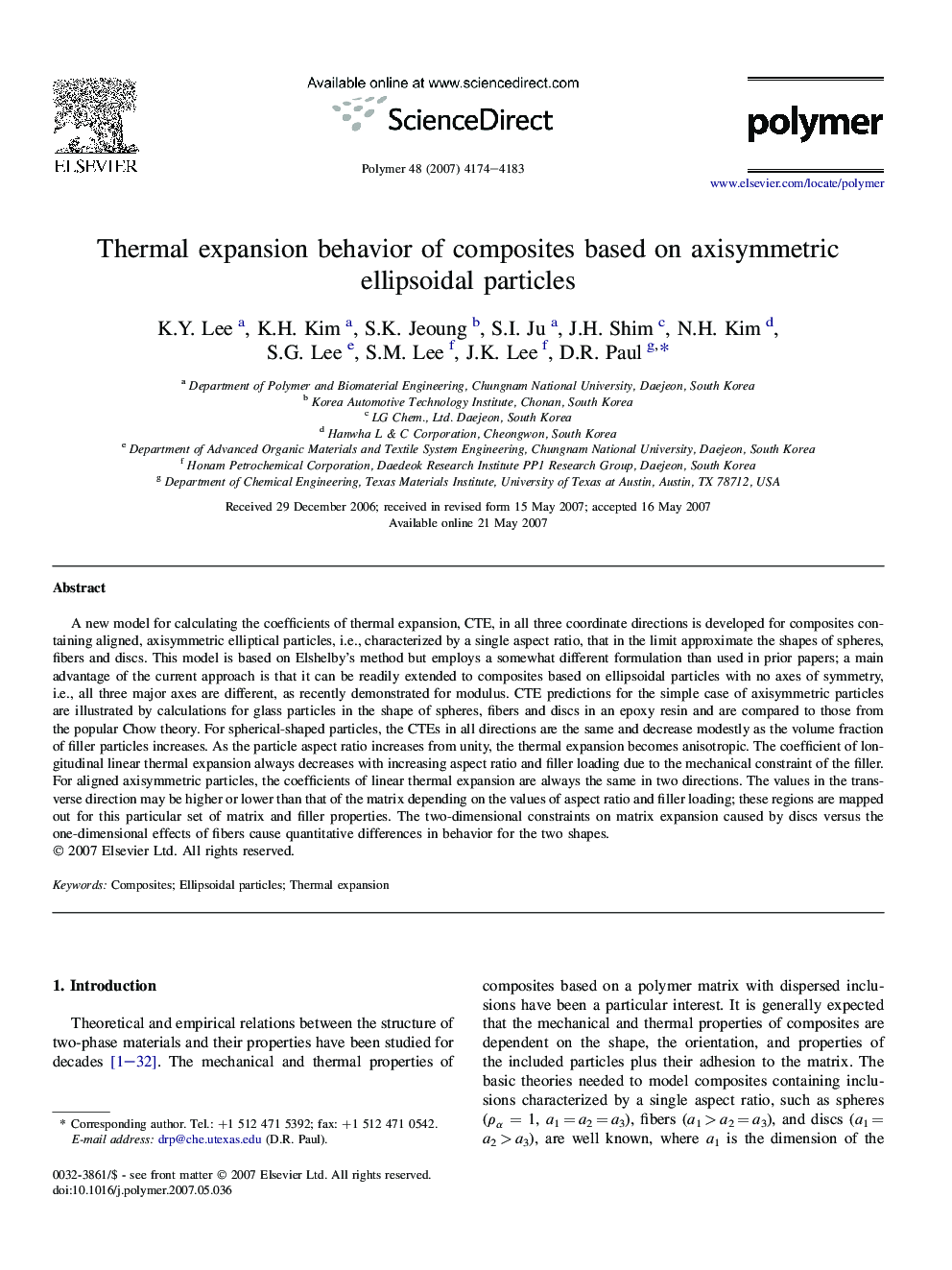| کد مقاله | کد نشریه | سال انتشار | مقاله انگلیسی | نسخه تمام متن |
|---|---|---|---|---|
| 5189953 | 1381194 | 2007 | 10 صفحه PDF | دانلود رایگان |
عنوان انگلیسی مقاله ISI
Thermal expansion behavior of composites based on axisymmetric ellipsoidal particles
دانلود مقاله + سفارش ترجمه
دانلود مقاله ISI انگلیسی
رایگان برای ایرانیان
کلمات کلیدی
موضوعات مرتبط
مهندسی و علوم پایه
شیمی
شیمی آلی
پیش نمایش صفحه اول مقاله

چکیده انگلیسی
A new model for calculating the coefficients of thermal expansion, CTE, in all three coordinate directions is developed for composites containing aligned, axisymmetric elliptical particles, i.e., characterized by a single aspect ratio, that in the limit approximate the shapes of spheres, fibers and discs. This model is based on Elshelby's method but employs a somewhat different formulation than used in prior papers; a main advantage of the current approach is that it can be readily extended to composites based on ellipsoidal particles with no axes of symmetry, i.e., all three major axes are different, as recently demonstrated for modulus. CTE predictions for the simple case of axisymmetric particles are illustrated by calculations for glass particles in the shape of spheres, fibers and discs in an epoxy resin and are compared to those from the popular Chow theory. For spherical-shaped particles, the CTEs in all directions are the same and decrease modestly as the volume fraction of filler particles increases. As the particle aspect ratio increases from unity, the thermal expansion becomes anisotropic. The coefficient of longitudinal linear thermal expansion always decreases with increasing aspect ratio and filler loading due to the mechanical constraint of the filler. For aligned axisymmetric particles, the coefficients of linear thermal expansion are always the same in two directions. The values in the transverse direction may be higher or lower than that of the matrix depending on the values of aspect ratio and filler loading; these regions are mapped out for this particular set of matrix and filler properties. The two-dimensional constraints on matrix expansion caused by discs versus the one-dimensional effects of fibers cause quantitative differences in behavior for the two shapes.
ناشر
Database: Elsevier - ScienceDirect (ساینس دایرکت)
Journal: Polymer - Volume 48, Issue 14, 29 June 2007, Pages 4174-4183
Journal: Polymer - Volume 48, Issue 14, 29 June 2007, Pages 4174-4183
نویسندگان
K.Y. Lee, K.H. Kim, S.K. Jeoung, S.I. Ju, J.H. Shim, N.H. Kim, S.G. Lee, S.M. Lee, J.K. Lee, D.R. Paul,